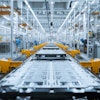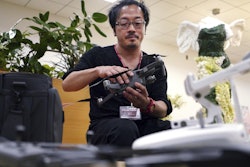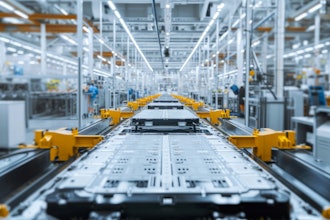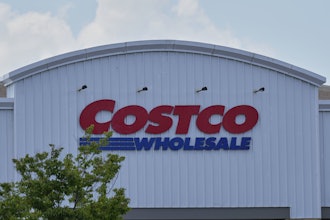1 | Industrial IoT Bsquare | August 2017
01 Improving Vehicle Uptime 02 IoT in Trucking 03 IoT in Agriculture
Industrial IoT:
Keeping Heavy-Duty
Vehicles Moving
06 An Illustrated Example04 IoT in Construction 05 The 5 Stages of IoT Progression
Page 2 | Industrial IoT Bsquare | August 2017
Heavy-duty vehicles are vital to business operations in
many industries, from commercial trucking to agriculture
and construction. Maintenance and repair costs for these
sophisticated, expensive assets can represent 20 to 30 percent
of a vehicle’s lifetime cost, incenting owners and operators to
seek ways to save money on repairs to help improve profitability
and productivity.
Manufacturers and fleet operators have broadly deployed
telematics solutions in order to gain more insight into vehicle
health; however, the usefulness of that insight is often limited
due to connectivity constraints or lack of resources that
can analyze the data generated by potentially hundreds of
thousands of vehicles.
Improving Vehicle Uptime and
Performance with IoT
01
Page 3 | Industrial IoT Bsquare | August 2017
Industrial Internet of Things (IIoT) technology turns this data into a valuable business asset. In
fact, a well-designed IIoT system can tap the entirety of data that vehicles produce – even without
continuous connectivity – and examine it in conjunction with related data sources, such as braking
and transmission subsystems, to provide deeper insight into vehicle condition. Ultimately, IIoT
positively impacts vehicle operations by improving uptime, reducing mean time to repair, and more
rapidly pinpointing the root cause of failures.
20% to 30%
Maintenance and repairs
of heavy-duty vehicles and
machinery can represent
of the vehicle’s cost.
Page 4 | Industrial IoT Bsquare | August 2017
IoT Use Cases for Vehicles
Adaptive diagnostics
Diagnosing and fixing vehicle problems quickly and correctly can be one of the most
effective ways to prune repair costs and increase uptime. Adaptive diagnostics detects
and analyzes all active fault codes in concert with operating parameters to pinpoint the
root cause of a fault. The results are used to dynamically generate accurate repair plans
that reduce repair times and improve first-time fix rates. Detailed repair instructions allow
service centers to bridge the technician experience gap and help get new technicians up
to speed faster.
Condition-based maintenance
Maintenance based on actual usage and operating conditions specific to each vehicle can
save money spent on too-frequent servicing, which can occur when vehicles are serviced
based on mileage or elapsed time. It also extends vehicle useful life by scheduling service
before failures occur, providing a better return on capital investment.
Predictive failure
Predictive reasoning can shrink emergency repair costs and boost vehicle uptime by
analyzing real-time engine data in context with external and historical information from
an entire fleet of connected vehicles. This contextual view allows pending failures to be
predicted more accurately, and can help prevent a minor fault from setting off a cascade of
failures that may be much more expensive and time-consuming to repair.
Page 5 | Industrial IoT Bsquare | August 2017
02
Most newer truck models are being manufactured with
telematics pre-installed. This, coupled with IIoT, helps fleet
operators and service centers gain an expanded view into
truck health. Adaptive diagnostics can determine the parts and
procedures required to repair a problem, and can interface with
parts inventory and dealer systems to determine the nearest
location with the required parts so that trucks get repaired
quickly and correctly. Because error conditions are identified
and reported more accurately, the incidence of false positives,
where no problem is found, and false negatives, where a
problem occurs but was not flagged, is greatly reduced.
IoT in Trucking
Page 6 | Industrial IoT Bsquare | August 2017
Ongoing maintenance can be done when absolutely necessary
based on actual operating conditions, which keeps trucks on
the road and generating revenue instead of being in the shop
at too-frequent intervals. Unexpected breakdowns and related
emergency expenses are avoided by performing service before
failures occur.
As the IIoT system becomes more intelligent over time through
the application of machine learning and sophisticated analytics,
predictive failure capabilities can help determine whether a
truck needs service now or can wait until the end of the trip.
Peterbilt has significantly reduced Mean-Time-to-Repair
(MTTR) and boosted first-time fix rates by implementing IIoT to
help identify, diagnose, and repair failures. Existing telematics
and remote diagnostic data from tens of thousands of trucks
was combined with workflow automation software and
historical repair records. Adaptive diagnostics was then applied
to analyze these multiple data sources and generate detailed
repair plans. Both diagnostics and repair plans are constantly refined as the system gains intelligence from the ever-expanding
body of knowledge. Both Peterbilt and its service centers have benefitted from improved problem identification and more accurate,
efficient repair processes.
This success isn’t just the result of an ideal IIoT system. Rather, Peterbilt identified opportunities where IoT could help achieve business
goals. They considered their existing technology, organizational readiness, desired outcomes, and established a plan where IoT could
help them reach those goals.
A Tale of Success
Page 7 | Industrial IoT Bsquare | August 2017
Elements of an IoT system
Page 8 | Industrial IoT Bsquare | August 2017
03
Farmers have been investing heavily in technology, including
data collection and analysis, as a means to increase crop yields.
Making sure large and expensive farming vehicles, from tractors
and trucks to harvesters and combines, are in top operating
condition is critical to ensuring crops can be planted, harvested,
and delivered to market on time for the greatest revenue
opportunity.
With repairs and maintenance representing a large portion of a
vehicle’s cost, farmers who reduce those costs can immediately
improve profitability. A study of farmers in the Midwest showed
that machinery repair costs could be reduced by 25% just by
improving routine maintenance procedures. By expanding
those savings across an entire fleet of equipment, savings can
be significant.
IoT in Agriculture
A 25% reduction shrinks
that cost to just under
$22,500 by improving
maintenance processes.
Example:
A $100,000 tractor can be expected to cost
about $30,000 in repairs and maintenance
over the course of its useful life.
Page 9 | Industrial IoT Bsquare | August 2017
IIoT can help farmers determine whether equipment is functioning optimally, and provide servicing dealers or
maintenance companies with the necessary information to get repairs done quickly and correctly. By employing
adaptive diagnostics to analyze multiple sources of information, from ag machinery engine data to repair and
warranty records, the IIoT system can accurately determine the cause of a fault. Servicing dealers, who must often
repair equipment in the field, receive detailed and accurate repair plans that let them know exactly what parts and
technician expertise will be required to fix the problem right the first time and get machinery up and running as
quickly as possible.
IIoT also tracks the actual operating conditions of equipment to facilitate condition-based maintenance. This
significantly reduces the cost of ownership for machinery by servicing it only when actually necessary, yet making
sure items requiring maintenance are identified for timely servicing.
Agricultural environments face several challenges in successful IoT adoption. One is the spotty or bandwidth-
constrained connectivity present on many large and rural farms. To fully realize IIoT’s benefits, a portion of the
system should reside on the equipment to allow data to be examined and analyzed locally so that only that data
necessary for further action must be transmitted.
Many farmers
could reduce
m a c h i n e r y
repair costs
by improving
r o u t i n e
maintenance
procedures.
25%
Page 10 | Industrial IoT Bsquare | August 2017
04
Construction vehicles and equipment often operate in fluid
environments – jobsites change regularly and the inventory
of equipment is unique to each site. Leasing companies that
provide equipment to contractors have a strong business
incentive to ensure their equipment is used only as and where
it is supposed to be, and that it remains in excellent working
order. In turn, contractors trust leasing companies with well-
maintained, reliable equipment with their ongoing business.
By tapping the adaptive diagnostics capabilities of an IIoT system
that collects and analyzes construction equipment engine data,
operating and environmental conditions, maintenance and
repair histories, and other contextual information, equipment
faults can be repaired rapidly and correctly. The system uses
multiple sources of data and complex event analysis to accurately determine the cause of a problem, and then generates repair
plans that guide technicians with the parts and steps they need to fix the issue correctly the first time. Over time, the system gains
knowledge and can help predict failures before they happen, maximizing uptime and heading off catastrophic failures.
IoT in Construction
Page 11 | Industrial IoT Bsquare | August 2017
IIoT can also help routine maintenance become more efficient by tracking duty cycles of operation, real-time engine
data, and contextual information to identify when service is required based on the actual operating environment
of each piece of equipment. With the insight provided by IoT, leasing companies and operators can then schedule
maintenance when it has the least impact on a project. This reduces operational costs and extends equipment useful
life, providing a better return on capital investment.
IIoT can also help enforce usage requirements through applications such as geo-fencing that only allow vehicle
operation within the designated jobsite.
According to The Geaslin Group,
there is an exponential cost increase
for neglecting to repair a failing part.
For example, continuing to operate
a vehicle that needs a $40 brake
block replacement can balloon to
$1600 in mechanical and
towing costs.
Page 12 | Industrial IoT Bsquare | August 2017
05
The 5 Stages of IoT Progression
Whether used in commercial trucking, agriculture, or
construction, IIoT can help businesses increase productivity
and efficiency by improving heavy-duty vehicle uptime and
reducing the amount of time it takes to make repairs.
IIoT is not a single technology or solution however, and should
be approached in a way that best enables each organization’s
business goals and existing technologies. It should be viewed
as the basis for an overall strategy.
Page 13 | Industrial IoT Bsquare | August 2017
Today’s sophisticated heavy-duty trucks, ag machinery,
and construction equipment come outfitted with hundreds
of sensors that collect myriad data and have a variety of
connectivity options – from plug-in diagnostic reader ports to
wireless modules. Previously, when problems arose, technicians
had to physically plug in a laptop to review fault codes. From
there, they’d attempt to troubleshoot the issue, which could
take hours or days. Meanwhile, the vehicle sat idle; often
inoperable for extended periods while parts were ordered and
repairs made. Moreover, initial repairs often failed to resolve the
issue – requiring even more downtime.
Now, connected engines provide that foundational first step
of data collection and forwarding. However, investing in
simple data collection and forwarding alone doesn’t provide a
corresponding business benefit. Realizing value from that data
requires monitoring and alert capabilities. Further, network
availability and bandwidth restrictions in highway, farm, and
construction locations can frequently limit the amount of data
that can be cost-effectively or efficiently forwarded.
Stage 1: Device Connectivity & Data Forwarding
Sensor data is transmitted and stored for analysis
and action.
Page 14 | Industrial IoT Bsquare | August 2017
Stage 2: Real-Time Monitoring
Data is monitored and visualized to initiate use cases
for desired business outcomes. Achieves awareness
of equipment status and refines business processes.
Monitoring and visualizing connected engine data can deliver
valuable performance insights. Either on site, or remotely
via the cloud, dashboard systems display operational and
environmental data in real time. This visibility allows companies
to set alerts for faults or specific operating conditions. However,
these notifications only indicate the symptom of a problem,
not the root cause. Moreover, they still require someone take
corrective action. Often, that’s a time-consuming process
involving steps like referencing a manual, ordering required
parts, and coordinating repairs – either at a service center or
on site.
Furthermore, many error conditions are not isolated, and
often herald a larger issue. So without proper context, false
positives and negatives threaten to either waste time on a
nonexistent problem, or mask an issue until it becomes a large,
unexpected failure. All of which underscores the limitations of
basic dashboard solutions: the human element. Even the most
experienced operators lack the sophisticated logic to handle
the complexities and data volumes associated with modern
heavy duty equipment. That said, they do provide a foundation
organizations can build on to achieve their objectives.
Page 15 | Industrial IoT Bsquare | August 2017
Stage 3: Data Analytics
Analyzing complicated, multifaceted events, using multiple
sources of data, is where IoT adds real business value.
Applying complex event processing and adaptive analytics to
vehicle data, plus multiple sources of historical and real-time
complementary data, greatly enhances insight into the health
of an entire fleet, and can reduce false positives by as much as
30 percent. Effective data analytics requires several elements:
data discovery, machine learning, cluster analysis, and digital
modeling. Together, they deliver valuable insight that drive
better decision making.
When working to reduce repair costs and maximize uptime, just
finding available technicians with the right expertise, and the
right parts can be a challenge. So data insights that help identify
underlying issues faster, and more accurately – improving first-
time repair rates – are extremely valuable. Analytics can also
help optimize repair plans, identify necessary parts, and guide
less-experienced technicians. However, the massive amount of
data fleets produce can overwhelm human minds, even with a
dashboard, limiting the business benefit of analytics.
Delivers insight, predictions and optimization using
many different types and formats of data. Reduces
unnecessary false positives by an average of 25%.
Page 16 | Industrial IoT Bsquare | August 2017
Stage 4: Automation
Orchestrates automated, complex actions from
equipment to inventory, support, service ticketing,
and other systems to enable condition-based
maintenance and better device utilitation.
Adaptive analytics provide a wealth of insight and awareness.
Automation expands on this insight and allows the system
to become progressively more intelligent by using dynamic
rules to orchestrate complex actions across multiple areas of
the organization, like service ticketing and inventory systems.
Rules, such as those for data collection, are adaptable based on
changing conditions.
For example, if a vehicle is operating normally, the system collects
and transmits less data. But upon detecting an anomalous
condition, it can execute a series of automated steps to correct
the error. It can also automatically adjust a vehicle’s operating
parameters to keep it running, while minimizing damage, until
repairs can be made. At the same time, it can generate work
orders through the service ticketing system, order required
parts, dispatch the closest and most qualified technician, and
estimate repair time. At this stage, heavy-duty vehicle owners
and operators can realize measurable business benefit from all of
the use cases already outlined, including adaptive diagnostics,
condition-based maintenance, and predictive failure.
Page 17 | Industrial IoT Bsquare | August 2017
Adding intelligence and processing capabilities directly on
board the vehicles themselves allows analytics and actions
to take place at the network edge, even without connectivity.
Bringing the logic to the data increases accuracy, conserves
data storage and network bandwidth, and enables a wide
range of additional use cases such as asset optimization. Plus
farms, construction sites, and highways often have limited or
highly constrained connectivity, such as cellular or satellite
communications, so transferring large amounts of data can be
cost-prohibitive.
By taking advantage of computing capabilities that already
exist on many of today’s heavy-duty vehicles, data analytics and
automation can occur directly on board, in real time. This avoids
data transfer challenges, while enabling powerful analytics
capabilities to deliver all the benefits of a fully connected
solution. Analyzing 100% of the data leads to faster, more
accurate results, while eliminating the need, and associated
costs, to transmit and store unnecessary data. Conserving
bandwidth for communicating key results and any associated
actions required beyond the vehicle.
Stage 5: Enhancing On-Board Intelligence
Provides maximum ROI and business benefit from
predictive failure, data-driven diagnostics, and device
optimization.
Page 18 | Industrial IoT Bsquare | August 2017
Consider a scenario where engine coolant temperature is rising, most likely caused by a faulty water pump or broken drive belt. By
monitoring and examining the HVAC system in addition to the engine, the IIoT system can recognize that the AC compressor is not
turning, indicating that the drive belt is the likely cause. This information can be used to alert the servicing dealer so they can perform
repairs quickly and accurately.
An Illustrated Example
06
Rising coolant temperature triggers a fault code. The
system analyzes HVAC data in conjunction with the
fault code and determines the AC compressor is not
turning.
1
Identifying the drive belt as the probable cause, the
system creates a detailed repair plan with step-by-
step instructions and parts lists based on engine
specification data, the vehicle’s repair history, and
historical information from the entire fleet.
2
Page 19 | Industrial IoT Bsquare | August 2017
The repair plan is sent via workflow
automation software to the servicing
dealer, generating necessary parts
orders. The dealer can then assign
the appropriate technician to perform
repairs.
3
The technician’s status, location, and
estimated time to repair is continually
communicated to key stakeholders:
the driver, the servicing dealer, and the
fleet operator.
4
A junior technician armed with the
repair plan and parts is dispatched to
the vehicle and is able to replace the
drive belt as correctly and quickly as a
master technician.
5
The system updates its data repository
with this new repair information and
links to the dealer warranty system to
initiate a claim.
6
Page 20 | Industrial IoT Bsquare | August 2017
IIoT can unequivocally improve vehicle uptime – spelling greater productivity for heavy-duty trucks that are rolling revenue generators,
farmers that are producing ever-increasing crop yields, and construction companies that must complete projects within budget and
on time. And while the technology is a crucial element, a successful IIoT initiative is a cross-organizational effort with shared business
goals that is best undertaken in stages, rather than an “all or nothing” approach. It is important to view IoT as a maturity progression
as an organization’s business needs and IIoT implementation evolve. The desired business outcomes will determine whether it is
necessary to complete all five stages. The best way to determine where to start and finish an IIoT implementation is to have a clear
strategy, plan for execution, and an understanding of what constitutes success.
Summary
Maximize business outcomes
in your industry with IoT
21 | Industrial IoT Bsquare | August 2017
For more than two decades, Bsquare has helped its customers extract business value from a broad array
of assets by making them intelligent, connecting them, and using data collected from them to improve
business outcomes. Bsquare software solutions have been deployed by a wide variety of enterprises
to create business focused Internet of Things (IoT) systems that can more effectively monitor assets,
analyze data, predict events, automate processes and, in general, optimize business outcomes. Bsquare
couples innovative software with advanced professional services that can help organizations of all types
make IoT a business reality.
To find out more about Bsquare and how your organization can best embrace IoT for maximum impact,
please email [email protected] or call 425-519-5900.
About Bsquare:
@Bsquarecorp /company/bsquareFor more information, please visit bsquare.com
© 2017 Bsquare Corporation. Bsquare and DataV are a registered trademarks of Bsquare Corporation in the U.S. and other countries. Other names and brands herein may be trademarks of others. Phone: 888.820.4500
Industrial IoT: Keeping Heavy-Duty Vehicles Moving
Latest in Home
ABB to Invest $110 Million in 4 U.S. Plants
September 17, 2025
Nvidia CEO Huang Says He's Disappointed by China Chip Curbs
September 17, 2025






















